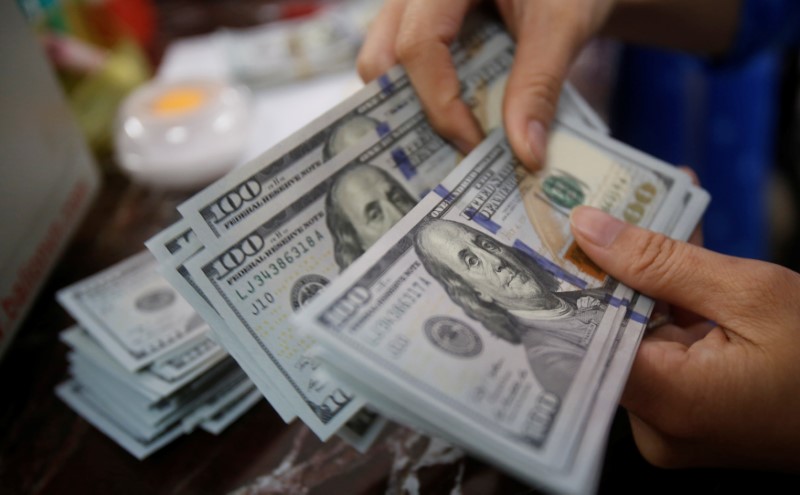By Yasin Ebrahim
Investing.com – The dollar climbed Thursday, as Fed's Jackson Hole symposium draws closer, but the carrot of Fed bond tapering isn't likely to save the greenback as the well of the good news for the reserve currency is running dry.
The U.S. dollar index, which measures the greenback against a trade-weighted basket of six major currencies, rose 0.25 % to 93.06.
"After its good performance in recent months, the U.S. dollar is likely to start edging down against several currencies in the near future," Desjardins said in a note.
The somber outlook on the dollar comes on the eve of the Federal Reserve Chairman Jerome Powell's speech at the Jackson Hole symposium.
The symposium has traditionally served as platform for the Fed to tee up monetary policy announcements, but there is a sense of the uncertainty on how much Powell is likely to shed on monetary policy.
Some suggest that with the monthly jobs report and the Fed's September meeting on the horizon, Powell will opt for caution. Others suggest the Fed chief could use the annual symposium to finetune the central bank's signaling ahead of the announcement later this month.
"It likely the Fed will announce that it will begin the bond tapering process at the September monetary policy meeting," Wells Fargo (NYSE:WFC) said in a note.
The backdrop of tighter monetary policy isn't likely to spur a meaningful move higher in the greenback, however, as most of the good news appears to be priced already," Desjardins added.
Others appear to be signing from the same hymn sheet, reigning in their bets on a rally in yields, often an ally to the greenback.
"We are reducing our 10- and 30-year U.S. Treasury yield year-end targets for 2021 and 2022," Wells Fargo said.
But even as the most of the good news appears to have been priced in for dollar upside, the path of the pandemic can quickly turn fortunes around for the greenback. In the event of an unfortunate return of pandemic mania, traders are likely to run into the safe arms of the king dollar.
"This time, the rise seems to be primarily based on concerns over the new COVID‑19 variants, the decline in efficacy of the vaccines and the emergence of a fourth wave in several countries," Desjardins added. "In a context of elevated uncertainty, investors tend to favor safe-haven currencies like the U.S. dollar. "
